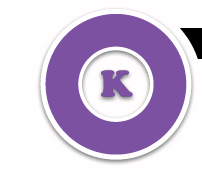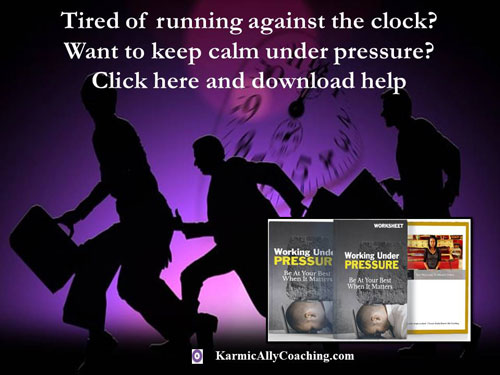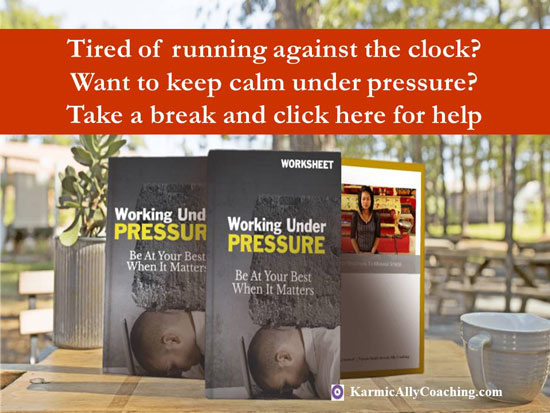
It’s one thing to confidently tell your prospective employer that you work well under pressure and another to do it. In today’s corporate world where everything has to be delivered literally like yesterday, there’s not much slack.
You’ll hit your limits and suddenly find that the high of hitting the deadline doesn’t happen anymore. Your simply too tired and there’s not enough downtime to recuperate energy. Besides, there’s another job or task that has to be completed on priority.
We’ve all been there. The deadline is looming, and we’ve barely begun to work. We all recognize that feeling in the pit of our stomach as we settle down to work. But does pressure really have to lead to stress? And what does stress actually do to our motivation and focus?
Beware: Stress can make you sick
We know stress from psychological pressure affects our bodies. It leads to higher blood pressure, anxiety, and a host of other symptoms. You can also develop diabetes due to intense pressure and stress.
If you aren’t careful, pressure can sneak up and overwhelm you. Before you know it, you’re a mess. Signs of a pending meltdown could be sitting in your chair, sweating, heart racing, and dreading the thought of doing any work.
Time and again there are reports in the media of professionals collapsing at their desks from heart failure and for a while there is talk of work hours and workplace well-being. The corporates cover it up with stories about how the employee had other health issues and soon the incident is forgotten.
The need for workplace wellness is real
Sometimes we need to see the numbers before we believe that stress and pressure can be silent killers.
This research was conducted by Heart Research UK’s Health Promotion and Education team. Data was collected in the period August 2023 to 2024. While the numbers relate to England, use it to understand the importance of managing our health anywhere in the world.
The study disclosed a concerning number of workers referred to their doctor with high blood pressure or cholesterol readings. Both increase the risk of cardiovascular disorder and heart problems.
Here’s what the figures revealed:
33% of people referred to their GP or had clinically high undiagnosed blood pressure and/or cholesterol readings.
From these health checks, 75% of people had blood pressure readings that put them at an increased risk of heart disease, with 27% of people referred to their GP for high blood readings.
60% had cholesterol readings that put them at an increased risk of heart disease, with 23% of people referred to their GP with a high reading.
If high blood pressure and high cholesterol levels are left untreated it can cause heart disease, which is life-threatening.
Other contributing risk and lifestyle factors that contribute to heart disease are stress, being overweight, not doing enough exercise, smoking and drinking too much alcohol or caffeine.
Within this data, 69% were classed as overweight or obese, 78% drank alcohol and 11% were smokers or used e-cigarettes.
Even if things don’t go to that extreme, speaking from personal experience, I caution you to be aware that stress can make you sick
It happened to me way back in 2001. Ours was a happy finance department working for an amazing Finance Director. As is normal with multinational companies, our boss was transferred to a new assignment in Italy. An outsider was recruited to replace him in the India operations.
The newcomer was as toxic as they come and didn’t want a female Finance Manager. He wanted to replace me with his protégé and set about trying to prove the incompetence of a professional who had already established her credentials.
At first it was emailing me assignments on Outlook with a timer inserted that pinged reminders every 15 minutes. What was being requested could have been told to me personally in less than 10 minutes.
He could have had the information within 30 minutes except for the distracting pings.
Then when I would give him the information, he would slap his forehead and hiss a reply through his teeth.
Things got to the stage where I dreaded looking at my emails and then one day, I started having palpitations and broke into a sweat.
I was hyperventilating and had to be rushed home.
My doctor recommended my seeing his cousin who was a heart specialist. It was a timely move, and I was advised 2 weeks complete rest.
Later my doctor told me that his cousin had reported that had I not seen him in time, I would have had a heart attack. I was a borderline case caused by the pressure being put on me by my boss.
When I returned to the office, it turned out that the Finance Director had secretly arranged for his protégé to come for an interview and I was being booted out.
Luckily for me, there was a requirement for a Finance Manager in another department where I had worked as a consultant and I was simply transferred.
The Finance Director continued to try to get me fired but to no avail as I now had another Director as an ally. The Country Manager stood firm on the equal opportunity employment policy.
Not wanting a female professional in finance was not a justification to fire me and would have opened up a lawsuit.
The next target was a female executive, but she survived because the boss got transferred to another city.
With good coping skills, pressure doesn’t always have to lead to stress
That aside, stress makes it really hard to concentrate on the task at hand. If you’re feeling pressure at work, and it’s leading to stress, then you probably aren’t at your most effective.
You might be missing deadlines or making mistakes or even worried yourself sick and had to take a personal day. All of these things can be caused by stress from psychological pressure.
Pressure can positively affect motivation, too. When you’re feeling stressed, you should try to practice positive thinking, self-distraction, or one of many other techniques that can beat stress and help your focus.
Motivation under pressure is an excellent skill to have, but like other skills it takes practice to get better. This website is full of positive suggestions and helpful hints for getting better at handling stress caused by pressure.
The most important thing you can do is learn to cope, because with positive coping mechanisms we see stress melt away, and in its place, there are a host of positive benefits of working under pressure.
Performing well under pressure
When you’ve mastered your stress levels and learn to perform under pressure you might notice a few things. You’ll keep a cooler head in difficult situations, thinking clearly when others around you are flailing wildly at the thought of some terrible outcome.
Your leadership skills improve, and that people turn to you in a crisis making you into a situational leader.
Your peers and bosses will perceive your Executive Presence. Perception management is a skill you need to further your career.
You might also see that you perform better under pressure, because of the positive coping mechanisms that you’ve mastered.
People who perform under pressure are in huge demand in every industry. Whether you’re at the office or behind a counter, performance under stress will lead to promotions and positive feedback.
Every employer on Earth wants to find someone who can keep a cool head under pressure, and with a little bit of practice and some positive habits that someone could easily be you.
Fortunately, there are some tricks to dealing with pressure.
With a little practice, you can turn nerve-wracking stress into pure motivation
In my previous blog post, I shared 2 easy ways to deal with pressure anytime and not just in the workplace.
Here are 6 more that I suggest you try.
Count Backwards
Even though it sounds simple, counting backwards from 100 is a great way to distract yourself from pressure and reset your mindset. This easy trick is the perfect way to get started doing a task that you’ve been putting off.
Sit back, close your eyes, and count backwards thinking only of the numbers instead of what is stressing you out.
Meditate
Meditation is an excellent way to relieve stress according to numerous medical studies. Clearing your mind from all thought and concentrating on your breathing leaves no room in your head to fixate and focus on what’s bothering you. Learning to meditate is one of the best ways to beat chronic stress and overwhelming pressure that there is.
Exercise
Nothing works like exercise when it comes to dealing with pressure. Not only does the act itself take your mind off of whatever is stressing you out, it also helps your brain to release positive endorphins that can make you feel great.
People who exercise regularly report feeling less stress and pressure at work and at home. It also helps reduce the risk of developing heart issues, high cholesterol and even diabetes.
You can also try Chakra Balancing Exercises as part of your exercise routine.
Believe in Yourself
Positive thinking can be one of the most powerful tools at your disposal. The simple act of believing in yourself and knowing that you’re doing your best is a great way to turn pressure into motivation.
The next time you’re faced with overwhelming pressure, tell yourself that you can do it. Whatever tasks is before you, think positively about them and envision yourself completing them. Practice staying calm under stress and pressure.
Enjoy What You Do
It never hurts to enjoy what you do, although this can be a difficult way of dealing with pressure. Look for the little things in the task that you like doing and complete them.
You’ll find that once you start working, you’re motivated to keep going. People who enjoy their jobs report feeling less pressure and higher levels of motivation than those who don’t like what they do for a living.
Stand Up and Take a Break
If nothing else is working, then stand up and take a break. I picked up this idea from a New Woman magazine way back in 1987 that suggested getting up from the desk and moving around for 5 minutes of every hour. While it was meant to prevent developing a huge backside and a sedentary desk job, it also works to reset and refocus on the task at hand.
Studies have shown that people who socialize at work, or even just stand up and stretch their legs, get more done than those who sit at their desk worrying over the task at hand.
With all these ideas that I have provided, there is no reason why you cannot build your coping mechanisms and resilience.
Need more support?
Download Working Under Pressure and implementing the guidance and resources in it.
In this self-study guide and worksheet, you’ll learn
- How to make better decisions under Pressure
- Apply Psychological solutions to Pressure and
- Use tips for being Mindful in Stressful situations
- Deep Breathing Technique to manage Stress





 I adhere to the Certified Coaches Alliance Code of Ethics and Standards. A copy is available on request.
I adhere to the Certified Coaches Alliance Code of Ethics and Standards. A copy is available on request.
 Email:
Email: